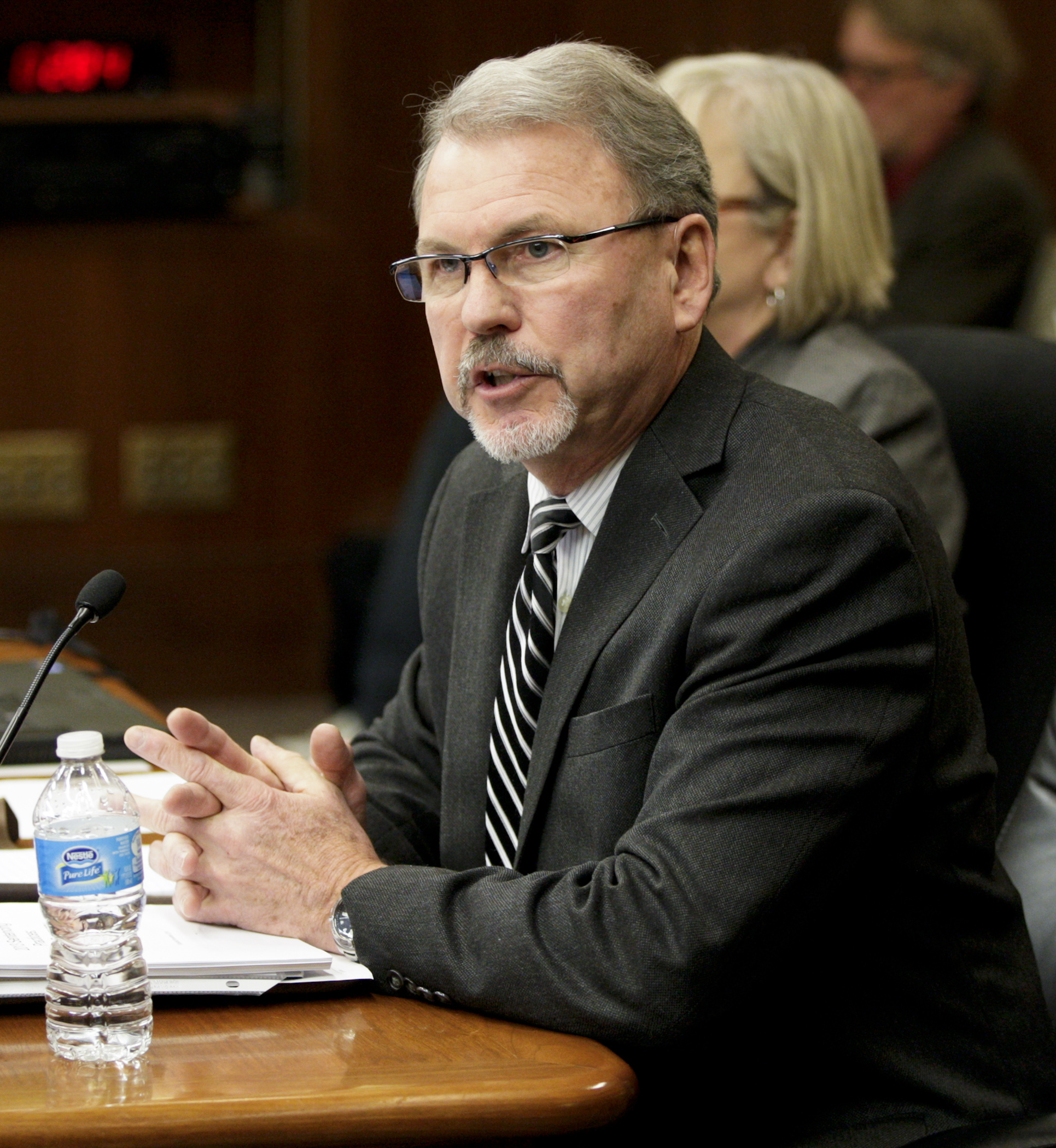DOC successful at treating some offenders; falling short elsewhere

Personal improvement is a goal of a Minnesota entity that houses thousands of clients at every second of every day.
However, that does not always happen. A solution could costs tens of millions of dollars or more.
“It is clearly our objective to have people walking out better from our institutions and better from our supervision,” Corrections Commissioner Tom Roy told the House Public Safety and Crime Prevention Policy and Finance Tuesday as part of a department overview. No action was taken.
The department has five goals to help the 89 percent of offenders who will be released from prison, including the use of evidence-based programming to change offender behavior in hopes of reducing recidivism and keeping the public safe.
Deb Kerschner, the department’s director of planning and performance, said 75 percent of felony offenders do not return to prison within three years; in part because 82 percent of offenders are working in a correctional industry or participating in other programming while in prison.
“If we make an effort, we can improve the life of others,” she said.
However, there is at least two areas where treatment efforts are lacking: chemical dependency and sex offender treatment.
In fiscal year 2014, 1,228 offenders participated in chemical dependency treatment, with 77 percent successfully completing the action. Of the 242 inmates who took part in sex offender treatment, 65 percent completed treatment.
“We are meeting about 30-35 percent of those who would benefit from treatment,” Roy said. “We have to prioritize those beds, and unfortunately it is constricted by resources, it’s constricted by physical space and it’s constricted by requirements that we would have to staff those initiatives.”
Roy said it would cost between $1.2 million and $1.4 million to add another 100 treatment beds. “I’ve said I think we should treat every sex offender that comes in our door and unfortunately we don’t.”
As a state that favors community supervision as an alternative to prison, Minnesota has the second-lowest incarceration rate in the nation, ranks 49th in state General Fund expenditures on corrections at 2.7 percent (the national average is 6.8 percent) and is 47th in correctional staff as a percentage of state employee workforce at 5.2 percent. The national average is 11 percent.
As of July 1, 2014, the department oversaw 9,929 adult inmates in state prisons. Another 116,000 adult offenders were under community supervision as of Dec. 31, 2013. The latter group is supervised by community corrections and county probation agents.
The department intakes about 7,000 inmates annually, and releases about the same number. In fiscal year 2014, 17,104 offenders were in a prison facility at some point.
Related Articles
Search Session Daily
Advanced Search OptionsPriority Dailies
Ways and Means Committee OKs proposed $512 million supplemental budget on party-line vote
By Mike Cook Meeting more needs or fiscal irresponsibility is one way to sum up the differences among the two parties on a supplemental spending package a year after a $72 billion state budg...
Meeting more needs or fiscal irresponsibility is one way to sum up the differences among the two parties on a supplemental spending package a year after a $72 billion state budg...
Minnesota’s projected budget surplus balloons to $3.7 billion, but fiscal pressure still looms
By Rob Hubbard Just as Minnesota has experienced a warmer winter than usual, so has the state’s budget outlook warmed over the past few months.
On Thursday, Minnesota Management and Budget...
Just as Minnesota has experienced a warmer winter than usual, so has the state’s budget outlook warmed over the past few months.
On Thursday, Minnesota Management and Budget...